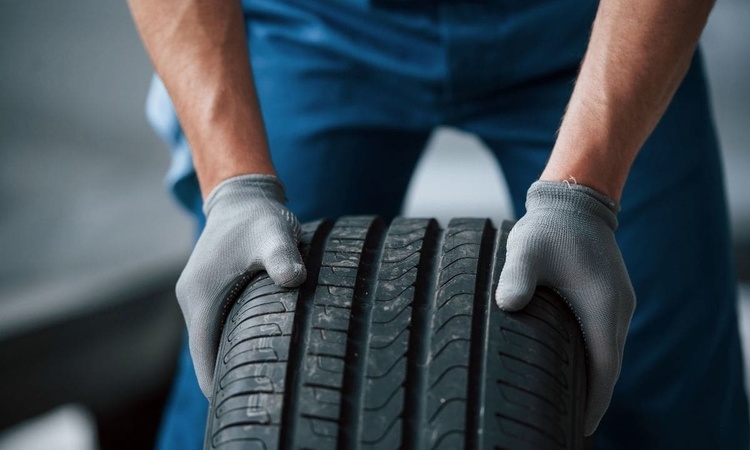Reinventing the Wheel: The Rise of Airless Tire Technology
The rhythmic hum of tires on asphalt is a sound as familiar to drivers as the purr of an engine. But what if that sound were to change? What if the very concept of a tire—air-filled rubber meeting the road—were to be revolutionized? Welcome to the world of airless tire technology, where innovation is quite literally reinventing the wheel.

The Evolution of the Tire: From Solid to Pneumatic to Airless
The story of the tire is as old as the wheel itself. From wooden wheels to iron bands, and eventually to the pneumatic tires we know today, the evolution has been driven by the quest for improved performance, comfort, and durability. The pneumatic tire, invented by John Boyd Dunlop in 1887, marked a significant leap forward, offering a smoother ride and better traction. However, it also introduced vulnerabilities—susceptibility to punctures, pressure loss, and the need for regular maintenance.
Airless tire technology represents the next major step in this evolutionary journey. Also known as non-pneumatic tires (NPTs) or tweel (a portmanteau of tire and wheel), these innovative designs eliminate the need for air pressure altogether. Instead, they rely on a unique structure of spokes or honeycomb-like materials to support the weight of the vehicle and provide the necessary cushioning.
The Mechanics Behind Airless Tires
At the heart of airless tire technology lies a radical rethinking of tire structure. Traditional pneumatic tires rely on compressed air to maintain their shape and support the vehicle’s weight. Airless tires, on the other hand, achieve this through their physical design and material composition.
The typical airless tire consists of three main components: a shear band, spoke structures, and a wheel hub. The shear band is the outer layer that comes into contact with the road, similar to the tread on a conventional tire. The spoke structures, which can take various forms depending on the manufacturer, replace the air in traditional tires. These spokes are designed to flex and absorb shock, mimicking the cushioning effect of air. Finally, the wheel hub connects the tire to the vehicle.
The materials used in airless tires are equally innovative. Many designs incorporate advanced polymer compounds that offer the right balance of strength, flexibility, and durability. Some manufacturers are even exploring the use of biodegradable materials, aligning with the growing focus on sustainability in the automotive industry.
Advantages: Beyond the End of Flat Tires
The most obvious benefit of airless tires is the elimination of flat tires and blowouts. This not only enhances safety but also reduces downtime and maintenance costs, particularly for commercial fleets. However, the advantages extend far beyond this.
Airless tires offer consistent performance regardless of temperature or load conditions. Unlike pneumatic tires, which can suffer from pressure fluctuations due to temperature changes or heavy loads, airless tires maintain their shape and performance characteristics. This translates to improved fuel efficiency, as the tires always maintain optimal contact with the road.
Moreover, airless tires have the potential to be more environmentally friendly. They can be designed with recyclable materials and, due to their longer lifespan, reduce the number of tires that end up in landfills. Some designs even allow for the replacement of just the outer tread, further minimizing waste.
Challenges and Hurdles in Adoption
Despite their numerous advantages, airless tires face several challenges before they can become mainstream. One of the primary concerns is heat buildup. The flexing of the spoke structures generates more heat than air compression in traditional tires, which can affect performance and durability, especially at high speeds.
Another challenge lies in achieving the right balance of stiffness and compliance. The tire needs to be stiff enough to support the vehicle’s weight and provide stability, but compliant enough to absorb shocks and provide a comfortable ride. This is an area where air-filled tires currently have an advantage, as air pressure can be adjusted for different conditions.
There are also concerns about debris getting trapped in the open structure of some airless tire designs, which could affect balance and performance. Manufacturers are working on solutions, such as protective covers, to address this issue.
The Road Ahead: Future Prospects and Industry Impact
As research and development in airless tire technology continue to advance, we’re likely to see these tires become increasingly common, particularly in specific applications. Military vehicles, construction equipment, and other heavy-duty applications where tire failure can be costly or dangerous are prime candidates for early adoption.
For passenger vehicles, the transition may be more gradual. However, as the technology improves and costs decrease, we could see airless tires becoming a standard feature, especially in electric and autonomous vehicles where consistent performance and low maintenance are crucial.
The impact on the tire industry could be profound. Traditional tire manufacturers are investing heavily in this technology, recognizing its potential to disrupt the market. We may see new players emerge, specializing in airless tire design and production. The aftermarket and repair sectors will also need to adapt, as the skills and equipment required for airless tire maintenance and replacement will differ significantly from those for conventional tires.
As we stand on the cusp of this tire revolution, one thing is clear: the future of automotive technology isn’t just about what’s under the hood—it’s also about what’s under the car. Airless tire technology promises to transform our relationship with the road, offering a glimpse into a future where the wheels on our vehicles are as high-tech as the computers that run them.





